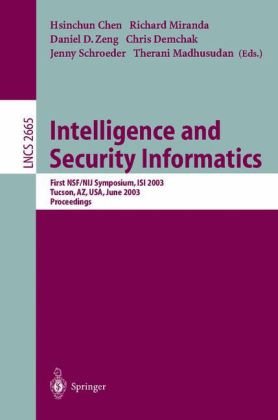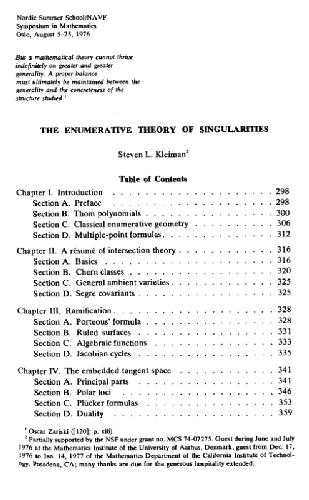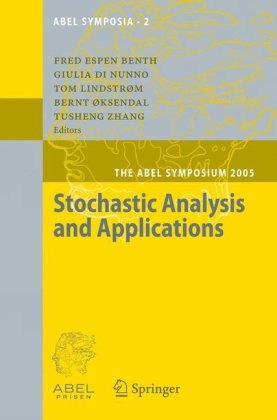Aixin Sun, Myo-Myo Naing, Ee-Peng Lim, Wai Lam (auth.), Hsinchun Chen, Richard Miranda, Daniel D. Zeng, Chris Demchak, Jenny Schroeder, Therani Madhusudan (eds.)354040189X, 9783540401896
Table of contents :
CrimeLink Explorer: Using Domain Knowledge to Facilitate Automated Crime Association Analysis….Pages 168-180
A Spatio Temporal Visualizer for Law Enforcement….Pages 181-194
Tracking Hidden Groups Using Communications….Pages 195-208
Examining Technology Acceptance by Individual Law Enforcement Officers: An Exploratory Study….Pages 209-222
“Atrium” — A Knowledge Model for Modern Security Forces in the Information and Terrorism Age….Pages 223-231
Untangling Criminal Networks: A Case Study….Pages 232-248
Addressing the Homeland Security Problem: A Collaborative Decision-Making Framework….Pages 249-265
Collaborative Workflow Management for Interagency Crime Analysis….Pages 266-280
Using Support Vector Machines for Terrorism Information Extraction….Pages 1-12
Criminal Incident Data Association Using the OLAP Technology….Pages 13-26
Names: A New Frontier in Text Mining….Pages 27-38
Web-Based Intelligence Reports System….Pages 39-58
Authorship Analysis in Cybercrime Investigation….Pages 59-73
Behavior Profiling of Email….Pages 74-90
Detecting Deception through Linguistic Analysis….Pages 91-101
A Longitudinal Analysis of Language Behavior of Deception in E-mail….Pages 102-110
Evacuation Planning: A Capacity Constrained Routing Approach….Pages 111-125
Locating Hidden Groups in Communication Networks Using Hidden Markov Models….Pages 126-137
Automatic Construction of Cross-Lingual Networks of Concepts from the Hong Kong SAR Police Department….Pages 138-152
Decision Based Spatial Analysis of Crime….Pages 153-167
COPLINK Agent: An Architecture for Information Monitoring and Sharing in Law Enforcement….Pages 281-295
Active Database Systems for Monitoring and Surveillance….Pages 296-307
Integrated “Mixed” Networks Security Monitoring — A Proposed Framework….Pages 308-321
Bioterrorism Surveillance with Real-Time Data Warehousing….Pages 322-335
Privacy Sensitive Distributed Data Mining from Multi-party Data….Pages 336-342
P ro G en IE: Biographical Descriptions for Intelligence Analysis….Pages 343-345
Scalable Knowledge Extraction from Legacy Sources with SEEK….Pages 346-349
“TalkPrinting”: Improving Speaker Recognition by Modeling Stylistic Features….Pages 350-354
Emergent Semantics from Users’ Browsing Paths….Pages 355-357
Designing Agent99 Trainer: A Learner-Centered, Web-Based Training System for Deception Detection….Pages 358-365
Training Professionals to Detect Deception….Pages 366-370
An E-mail Monitoring System for Detecting Outflow of Confidential Documents….Pages 371-374
Intelligence and Security Informatics: An Information Economics Perspective….Pages 375-378
An International Perspective on Fighting Cybercrime….Pages 379-384
Hiding Traversal of Tree Structured Data from Untrusted Data Stores….Pages 385-385
Criminal Record Matching Based on the Vector Space Model….Pages 386-386
Database Support for Exploring Criminal Networks….Pages 387-387
Hiding Data and Code Security for Application Hosting Infrastructure….Pages 388-388
Secure Information Sharing and Information Retrieval Infrastructure with GridIR….Pages 389-389
Semantic Hacking and Intelligence and Security Informatics….Pages 390-390







Reviews
There are no reviews yet.